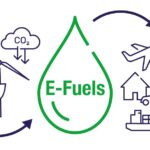Green energy is a vital and rapidly evolving aspect of our modern world. It represents a sustainable approach to generating electricity and power that has the potential to reduce greenhouse gas emissions, combat climate change, and mitigate the environmental impacts associated with conventional energy sources like fossil fuels. In this comprehensive guide, we will delve into every aspect of green energy, from its various sources and technologies to its environmental and economic implications.
What is Green Energy? Definition of Green Energy
Green energy is the energy derived from natural resources like sunlight, wind, or water. These types of energy sources are naturally replenished and environmentally sustainable. It often comes from renewable energy sources even though there are certain differences between renewable and green energy.
Green energy sources harness energy from the natural processes occurring on Earth and convert it into electricity or other forms of power without depleting finite resources or causing significant harm to the environment.
To qualify for energy as green energy, a resource cannot produce pollution similar to fossil fuels. This clarifies that all energy sources used by the renewable energy industry may not be green. To give an example, power generation by burning organic material from sustainable forests may be renewable, but as it generates CO2 it is not necessarily green energy.
The primary driving force behind the adoption of green energy is the urgent need to address climate change. The combustion of fossil fuels is a major contributor to the increase in greenhouse gases, leading to global warming and its associated consequences, such as extreme weather events, rising sea levels, and disruptions to ecosystems. Green energy offers a promising solution to reduce these emissions and transition to a more sustainable energy system.
How Does Green Energy Work?
To learn about the working principle of green energy, we have to first learn about green energy sources. A variety of sources such as solar energy, wind power, geothermal energy, biomass, hydroelectric power, etc contributed to the generation of green energy. Each of these sources works with their unique technologies. To give an example, Solar energy works by taking power from the sun using solar panels.
Types of Green Energy
The main sources are solar power, wind energy, hydroelectric power, biomass energy, geothermal energy, tidal and wave energy, etc. Solar and wind power can be suitable for both small-scale and large-scale industrial production.
The top seven common types of green energy are:
1. Solar Energy
Solar power is one of the common forms of green energy. It is produced using photovoltaic cells that capture sunlight and finally turn it into electricity. Sun is a huge source of energy and solar energy harnesses the power of the sun using solar panels. They are clean, abundant, and affordable. Solar power is also conventionally used to heat buildings and water. Solar power is being used for domestic purposes including garden lighting.
2. Wind Power
Wind turbines capture the kinetic energy of moving air and convert it into electricity. Wind energy is highly scalable and has the potential to generate substantial power, making it a crucial component of many renewable energy portfolios. They are particularly suited for high-altitude sites.

3. Hydroelectric power
Also known as hydropower, this type of green energy is generated by the movement of water, typically through rivers, dams, or waterfalls. As water flows, it turns turbines, which produce electricity. Hydroelectric power is a reliable and well-established source of green energy.
4. Geothermal Energy
Geothermal energy taps into the Earth’s heat stored beneath the Earth’s crust. It is harnessed through geothermal power plants, which use natural heat to generate electricity. Geothermal energy is reliable and available 24/7. It is a huge resource once tapped into.
5. Biomass Energy
Biomass energy is produced from organic materials such as wood, crop residues, sawdust, and agricultural waste. These materials can be burned directly for heat or converted into biofuels like ethanol and biodiesel. Biomass is a versatile and renewable energy source. However, this renewable resource needs careful monitoring to be truly labeled as a ‘green energy’ source as the burning releases greenhouse gas emissions.
6. Tidal and Wave Energy
Tidal and wave energy capture the energy of ocean tides and waves. Devices like tidal turbines and wave energy converters convert this kinetic energy into electricity. Tidal and wave energy are predictable and have vast potential, especially in coastal regions.
7. Biofuels
Biofuels such as ethanol and biodiesel can be used to produce green energy. Still in its nascent stage, biofuels have the capacity to meet more than 25% of global transportation fuel demand by 2050.
Importance of Green Energy
Green energy is crucial for several reasons:
- It plays a pivotal role in reducing greenhouse gas emissions, which are the primary drivers of global climate change. It avoids the damaging effects of fossil fuels with environmentally-friendly clean alternatives.
- Green energy sources are domestic and abundant, reducing reliance on fossil fuel imports and enhancing energy security.
- It minimizes the adverse environmental impacts associated with conventional energy sources, such as air and water pollution and habitat destruction.
- By utilizing replenishable resources, green energy ensures a long-term and sustainable energy supply for future generations.
- Green energy has the potential to stabilize energy prices as these sources are often produced locally and are usually unaffected by geopolitical crises, price spikes, or supply chain disruptions.
- Localized green energy production nature from sources like solar and wind makes the energy system more flexible and less reliant on vulnerable centralized sources. This also enhances its resilience to weather-related climate change impacts.
- Green energy can represent a low-cost energy solution for many parts of the world.
- More and more use of green energy will push to fulfill the net-zero target easily.
- The renewable energy sector has seen substantial job growth, providing employment opportunities in manufacturing, installation, maintenance, and research and development.
- Green energy presents attractive investment opportunities, with governments and private sector entities investing in renewable energy projects worldwide.
Environmental Benefits of Green Energy
Green energy offers numerous environmental advantages, making it a key solution to combat climate change and reduce ecological harm:
- Reduced Greenhouse Gas Emissions: The most significant environmental benefit of green energy is its substantial reduction in greenhouse gas emissions. By displacing fossil fuels, it helps mitigate global warming and its associated impacts.
- Air Quality Improvement: Green energy sources produce little to no air pollutants, such as sulfur dioxide and nitrogen oxides, leading to improved air quality and public health benefits.
- Water Conservation: Unlike many conventional power plants that require vast amounts of water for cooling, most green energy technologies have minimal water requirements, reducing stress on freshwater resources.
- Biodiversity Conservation: Green energy projects, when designed with ecological considerations, can minimize harm to wildlife habitats, leading to the conservation of biodiversity.
- Mitigation of Climate Change: Green energy helps reduce carbon dioxide emissions, making it a critical tool in the fight against climate change. It contributes to achieving international climate targets like those set in the Paris Agreement.
Examples of Green Energy Applications
There are plenty of examples of green energy applications in recent times. Green energy is used from energy production through to thermal heating for buildings, off-highway, and transport. Many industries are investigating implementing green solutions and some typical examples are:
Heating and Cooling in Buildings: Green energy solutions are now used in domestic homes and office buildings. Some typical solutions include solar water heaters, biomass-fuelled boilers, and direct heat from geothermal.
Industrial Processes: The use of biofuels, biomass, or renewable electricity is used to generate electricity for industrial processes. Hydrogen is a huge source of renewable energy for the iron, cement, steel, and chemical industries.
Transport: The transportation sector is using sustainable biofuels and renewable electricity to run vehicles. The electrification of transportation, including electric vehicles (EVs), is gaining momentum, reducing reliance on fossil fuels in the transportation sector.
Green Energy Policies and Initiatives
To promote the development and adoption of green energy, governments, international organizations, and industry stakeholders have implemented various policies and initiatives:
a. International Agreements
- Paris Agreement: The Paris Agreement, adopted in 2015, sets global targets for reducing greenhouse gas emissions. Signatory countries commit to limiting global warming to well below 2 degrees Celsius above pre-industrial levels and pursuing efforts to limit it to 1.5 degrees Celsius.
- Sustainable Development Goals (SDGs): Several SDGs, such as affordable and clean energy (SDG 7) and climate action (SDG 13), align with green energy goals and emphasize their role in sustainable development.
b. National Renewable Energy Targets
- Renewable Portfolio Standards (RPS): Many countries and states within countries have RPS that mandate a certain percentage of electricity generation to come from renewable sources.
- Feed-in Tariffs (FiTs): FiTs provide financial incentives to individuals or businesses that generate renewable energy, guaranteeing them a premium price for their electricity.
c. Subsidies and Incentives
- Tax Credits: Tax incentives and credits are often offered to individuals and businesses investing in green energy technologies, making them more financially attractive.
- Grants and Funding: Governments and organizations provide grants and funding for research, development, and deployment of green energy solutions.
- Carbon Pricing: Implementing carbon pricing mechanisms like carbon taxes or cap-and-trade systems can incentivize the transition to green energy by making fossil fuels more expensive.
d. Research and Development
- Government Research Initiatives: Many governments fund research programs and laboratories focused on advancing green energy technologies and reducing costs.
- Public-Private Partnerships: Collaboration between governments, research institutions, and private companies accelerates the development and deployment of green energy innovations.
Frequently Asked Questions (FAQs)
1. What is the difference between green energy and renewable energy?
Green energy and renewable energy are often used interchangeably, but green energy typically refers to energy sources that have a minimal environmental impact, whereas renewable energy simply means energy derived from naturally replenishable resources, which may or may not be environmentally friendly.
2. Can green energy replace fossil fuels entirely?
While green energy sources have the potential to significantly reduce our dependence on fossil fuels, a complete replacement is challenging due to issues like intermittency and energy storage. Achieving a sustainable energy future may involve a mix of green energy sources, improved energy efficiency, and innovations in energy storage and grid management.
3. Are green energy technologies economically viable?
The economic viability of green energy technologies varies by location, resource availability, and technological advancements. In many regions, the cost of green energy has become competitive with or even cheaper than fossil fuels. Continued research and development will further enhance their economic feasibility.
4. What role does nuclear energy play in the green energy landscape?
Nuclear energy is a low-carbon energy source but is not considered green due to concerns about nuclear waste disposal, accidents, and the finite availability of uranium. It is often a topic of debate in discussions about clean energy and climate change mitigation.
5. How can individuals contribute to green energy adoption?
Individuals can contribute by installing residential solar panels, reducing energy consumption through energy-efficient practices, supporting policies that promote green energy, and adopting electric vehicles if feasible. Additionally, individuals can choose green energy options offered by their utility providers.
6. What are some notable green energy projects around the world?
Notable green energy projects include the Ivanpah Solar Power Facility in California, the Three Gorges Dam in China for hydropower, the London Array offshore wind farm in the United Kingdom, and the Noor Solar Complex in Morocco.
7. How is green energy integrated into the transportation sector?
Green energy is integrated into transportation through electric vehicles (EVs) and the use of biofuels and hydrogen as cleaner alternatives to conventional gasoline and diesel. EVs, in particular, are becoming increasingly popular and are charged with electricity generated from green sources.
8. What is the role of green energy in achieving energy independence for nations?
Green energy reduces a nation’s dependence on fossil fuel imports, enhancing energy security and reducing vulnerability to supply disruptions. By harnessing domestic green energy resources, nations can achieve a degree of energy independence.






